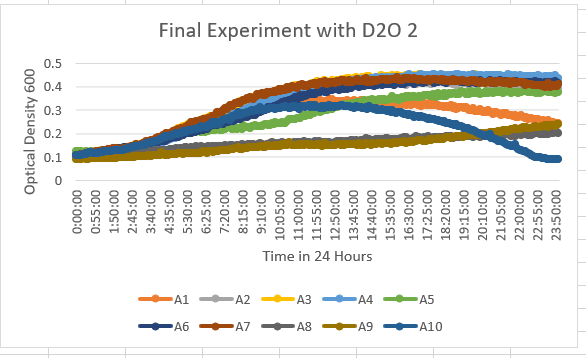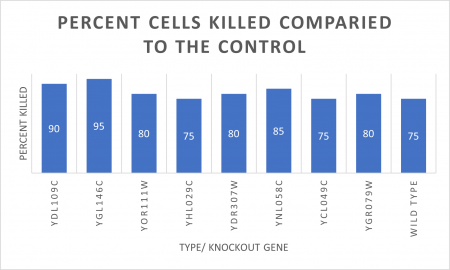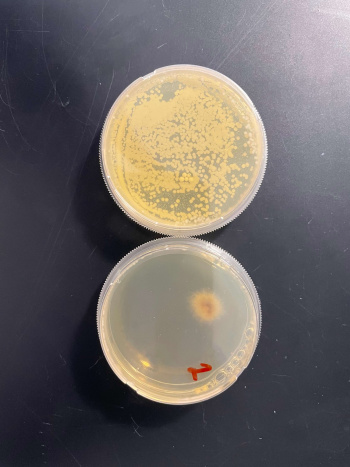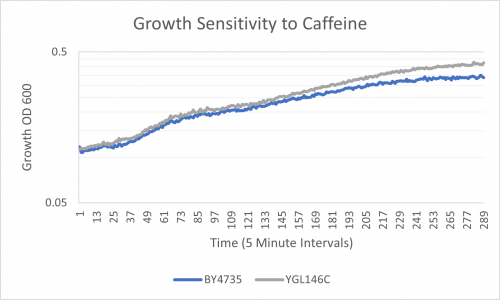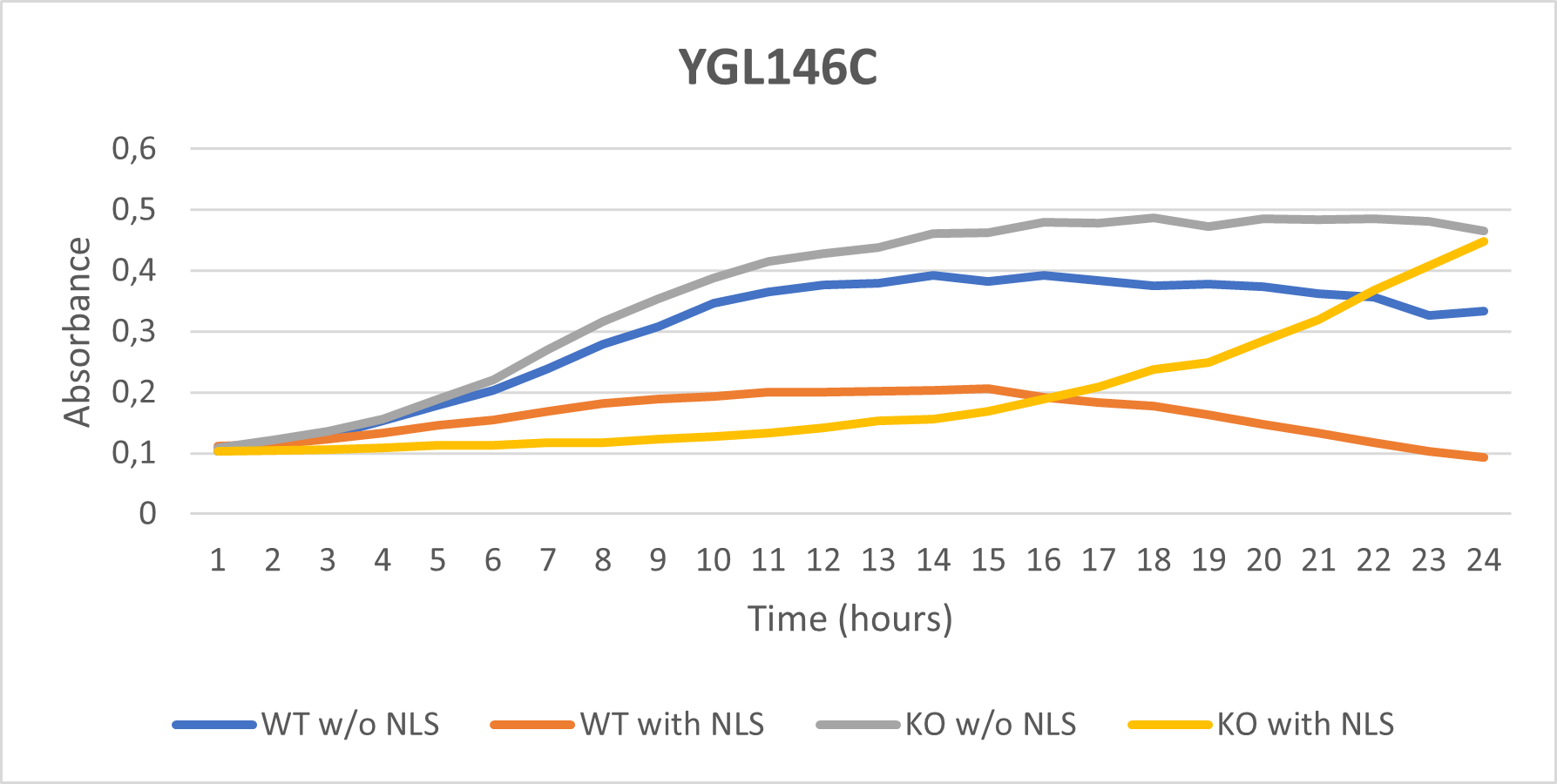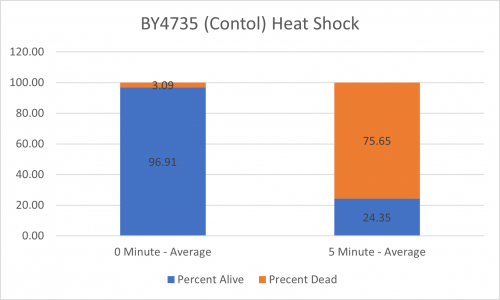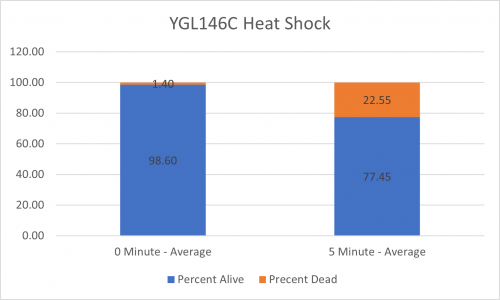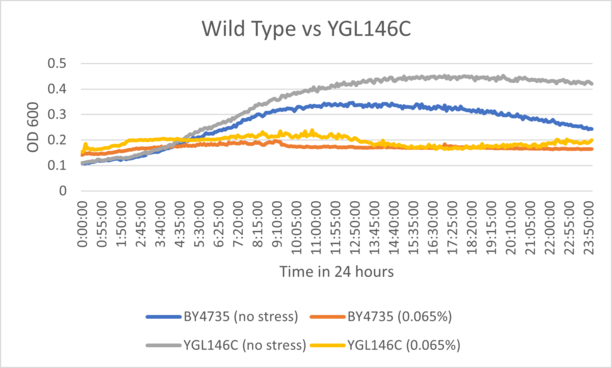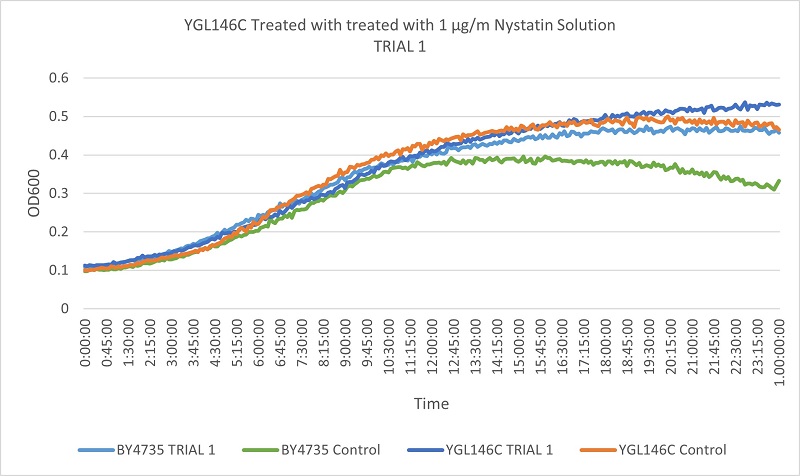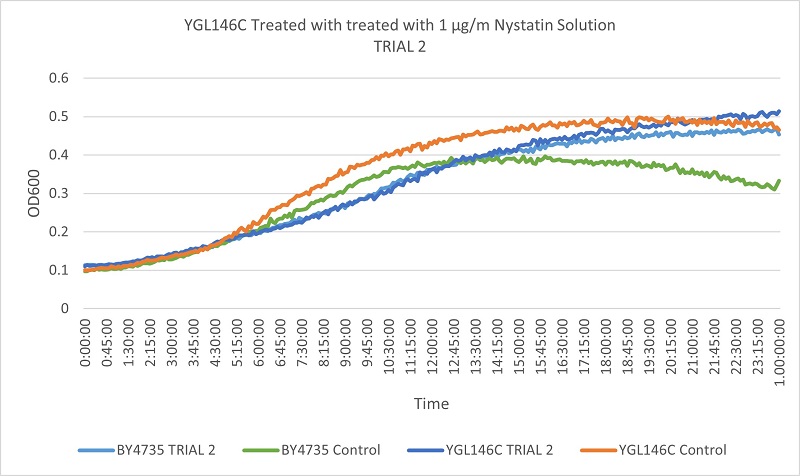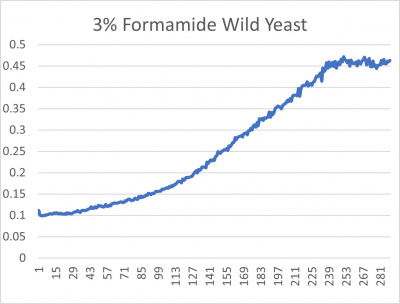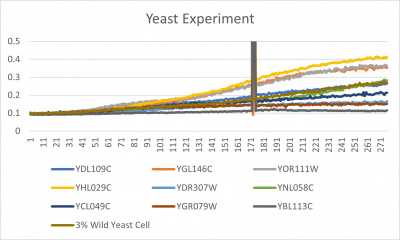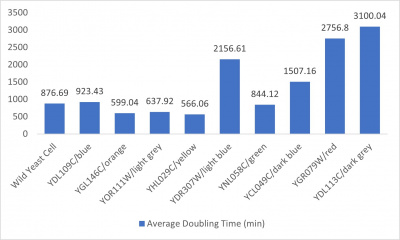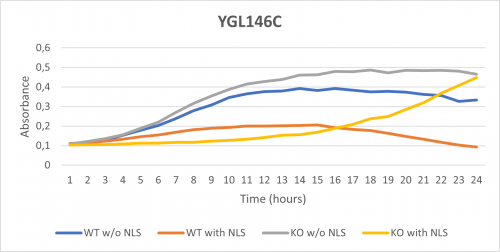YGL146C
Share your knowledge...Edit this entry! <protect>
| Systematic name | YGL146C |
| Gene name | RRT6 |
| Aliases | |
| Feature type | ORF, Uncharacterized |
| Coordinates | Chr VII:229686..228751 |
| Primary SGDID | S000003114 |
Description of YGL146C: Putative protein of unknown function; non-essential gene identified in a screen for mutants with increased levels of rDNA transcription; contains two putative transmembrane spans, but no significant homology to other known proteins[1][2][3]
</protect>
Contents
[hide]- 1 Community Commentary
- 2 References
Community Commentary
About Community Commentary. Please share your knowledge!
This gene is part of the UW-Stout Orphan Gene Project. Learn more here.
UW Stout/D2O SP22
The YGL146C Knock Out Yeast Strain was A2 and definitely unaffected by the 35% D20 dilution. It showed when it stayed in a maximum range of 0.4-0.5 OD 600.
UW Stout/Sucrose Fermentation SP22
| Gene | Glucose | Fructose | Ethanol |
| Standard solution | 2.0000 | 0.2000 | 2.0000 |
| YDl109C | 0.3800 | 0.3933 | 0.3430 |
| YGL140C | 0.2212 | 0.2685 | 0.1867 |
| YOR111W | 0.3332 | 0.3598 | 0.1343 |
| YHL029C | 0.3870 | 0.2368 | 0.1151 |
| YDR307W | 0.4366 | 0.2487 | 0.0606 |
| YNL058C | 0.2710 | 0.3056 | 0.1577 |
| YCL049C | 0.4078 | 0.3052 | 0.1969 |
| YGR079W | 0.4042 | 0.1589 | 0.0080 |
| YBL113C | 0.3498 | 0.2012 | 0.1434 |
| BY4735 | 0.3171 | 0.3084 | 0.3541 |
Interpretation
This gene produced 52.73% of the amount of ethanol that the wild type produced.
<protect>
UW-Stout/UV Light SP22
As part of the University of Wisconsin Stout Orphan Gene Project this gene was tested under a UV Light using this protocol.
RESULTS
INTERPERTATION
In the graph and photos above, exposing this gene to 600 seconds of 400 Watt UV Light killed approximately 95% of yeast cell cultures, compared to its control counterpart, which was the same gene and amount of cells, just was not exposed to UV Light.
UW-Stout/Caffeine SP22
As part of the University of Wisconsin Stout Orphan Gene Project this gene was tested by exposing the cells to 4mM of caffeine following this protocol.
Results
- BY4735(wild type yeast) and YGL146C(knockout yeast gene) growth after being subjected to 4mM caffeine solution.
Interpretation
As seen in the growth chart, YGL146C has no measurable difference in growth response to caffeine compared to the Wild-Type yeast.
UW-Stout/Heat Shock SP22
As part of the University of Wisconsin Stout Orphan Gene Project this gene was tested by exposing the cells to heat shock.
Results
Interpretation
From the data gathered, there was a large positive effect to knocking out this gene when it came to the yeast's ability to hold up to heat shock. The modified yeast cells were 318% more resistant to heat shock than the control.
UW-Stout/Hydrogen Peroxide SP22
As part of the University of Wisconsin Stout Orphan Gene Project this gene was tested by exposing the cells to hydrogen peroxide.
Results
BY4735 and YGL146C after being exposed to 0.065% dilution of hydrogen peroxide solution.
Interpretation
In the growth curve, YGL146C displayed significant sensitivity when treated with hydrogen peroxide solution. The overall range was much higher when compared to the wild type cells. This suggests that the strain may in fact be more sensitivity to oxidative stress.
UW-Stout/pH Acid SP22
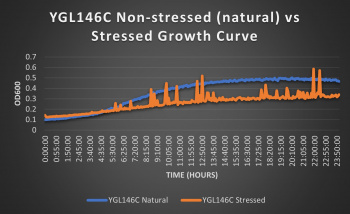 Knocked out gene seems to have some effect on cell growth in pH 7 environment based on the flattening of the growth curve. Spikes in stressed line are to be ignored; they occurred due to clumping of cells during analysis. We are focusing on the general linear trend of the growth curve. Please see protocol for specific quantitative doubling time results.
Knocked out gene seems to have some effect on cell growth in pH 7 environment based on the flattening of the growth curve. Spikes in stressed line are to be ignored; they occurred due to clumping of cells during analysis. We are focusing on the general linear trend of the growth curve. Please see protocol for specific quantitative doubling time results.
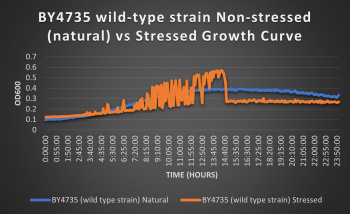 The wild-type strain was used as a control in this experiment; no genes were knocked out, it just represents how the experiment ran on the knocked-out gene strains affects a "typical" cell growth curve. Inclusion of this data on each knock-out strain growth curve graph made for difficult interpretation, so it has been separated. Please refer to this graph as a control when viewing the knock-out strain growth curve graph. Spikes in stressed line are to be ignored; they occurred due to clumping of cells during analysis. We are focusing on the general linear trend of the growth curve.
The wild-type strain was used as a control in this experiment; no genes were knocked out, it just represents how the experiment ran on the knocked-out gene strains affects a "typical" cell growth curve. Inclusion of this data on each knock-out strain growth curve graph made for difficult interpretation, so it has been separated. Please refer to this graph as a control when viewing the knock-out strain growth curve graph. Spikes in stressed line are to be ignored; they occurred due to clumping of cells during analysis. We are focusing on the general linear trend of the growth curve.
UW Stout/Nystatin SP22
As part of the University of Wisconsin Stout Orphan Gene Project this gene was tested by exposing the cells to 1µg/ml Nystatin solution.
Results
The growth rates of the experimental and control YGL146C strain, when compared to that of the wild type yeast, were similar enough not to indicate a difference in Nystatin tolerance when the YGL146C gene was knocked out.
UW-Stout/Formamide SP22
Results
- 3% formamide line graph: x-axis= growing time (min); y-axis= optical density 600
- Trial 2 line graph: x-axis= growing time (min); y-axis= optical density 600; key= yeast strains and corresponding color to the individual lines in the line graph
- Average doubling time bar graph: x-axis= yeast strains and corresponding colors to the trial 2 line graph; y-axis= average doubling time (min)
Interpretation
The wild yeast cell treated with 3% formamide had a doubling time of 876.69 min. The 3% formamide solution added to nine transformed yeast cells was then compared to the wild yeast cell using the computed doubling times to see the effects of the formamide. In the experiment, some of the transformed yeast cells were heavily effected by the formamide, including the YGL146C strain. The YGL146C strain had doubling times significantly faster than the wild yeast cell, with a doubling time of 599.04 min. It can be concluded that the transformed yeast cell, YGL146C, had a unique response to the formamide stress test used in the experiment.
References
See Help:References on how to add references
- Jump up ↑ Hontz RD, et al. (2009) Genetic Identification of Factors That Modulate Ribosomal DNA Transcription in Saccharomyces cerevisiae. Genetics 182(1):105-19 SGD PMID 19270272
- Jump up ↑ Pearson BM and Schweizer M (2002) Basic functional analysis of six unknown open reading frames from Saccharomyces cerevisiae: four from chromosome VII and two from chromosome XV. Yeast 19(2):123-9 SGD PMID 11788967
- Jump up ↑ Voet M, et al. (1997) The sequence of a nearly unclonable 22.8 kb segment on the left arm chromosome VII from Saccharomyces cerevisiae reveals ARO2, RPL9A, TIP1, MRF1 genes and six new open reading frames. Yeast 13(2):177-82 SGD PMID 9046099
See Help:Categories on how to add the wiki page for this gene to a Category </protect>
UW-Stout/Nonionic Detergent SP22
As part of the University of Wisconsin Stout Orphan Gene Project this gene was tested by exposing the cells to 0.001% concentrated NLS. (Nonionic detergent)
Interpretations:
-According to the graph above, we can see that the KO yeast cell YGL146C follow a smaller sensitivity to the stress than the Wild type strain.
-The KO with NLS peaks a lot later than the KO w/o NLS
-We can then conclude that the knocked-out gene in YGL146C doesn't have a significant impact on the growth of the yeast cell.
